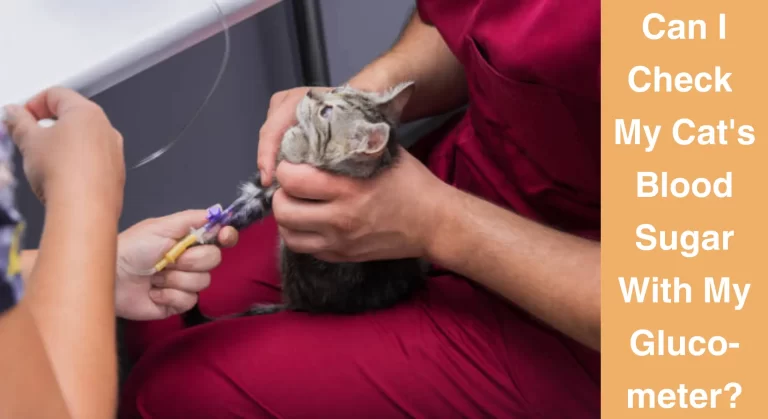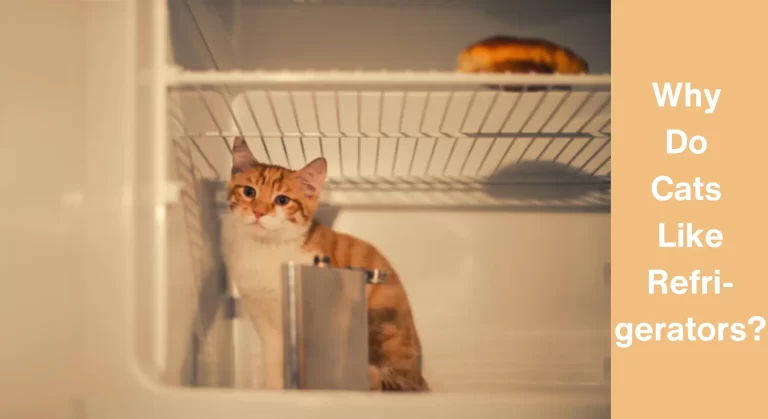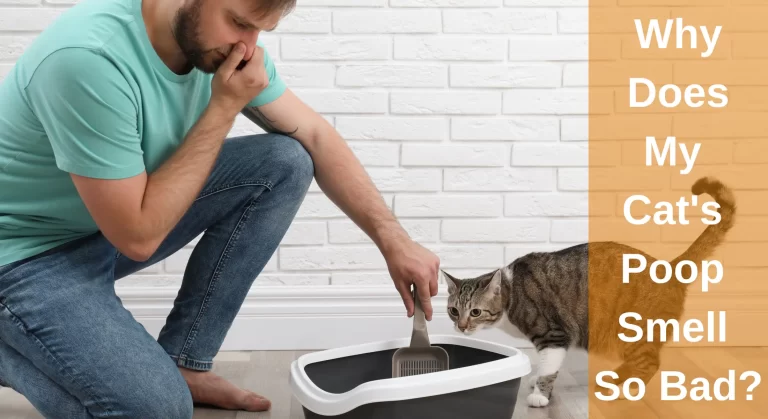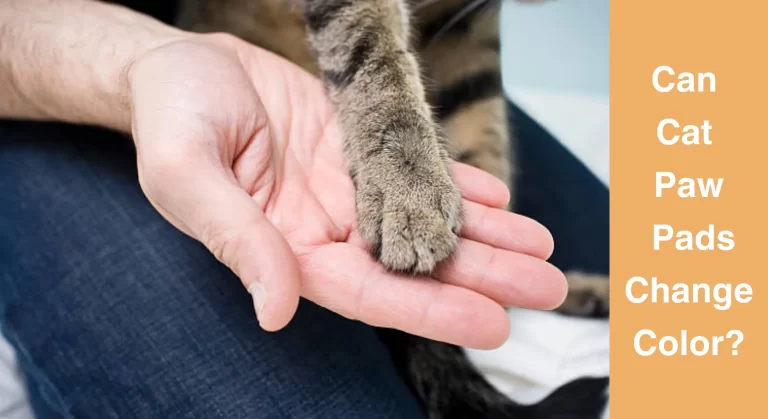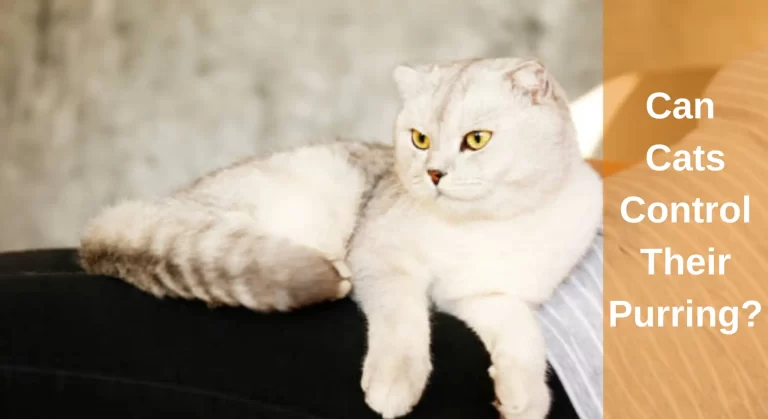Can Cat Wear Diapers? Cat Diapers 101
When it comes to our beloved feline companions, we go the extra mile to ensure their well-being and happiness. In certain situations, such as dealing with a cat’s incontinence issues or aiding their post-surgery recovery, the consideration of using a cat diaper arises. However, the task of making a cat wear a diaper is not always a walk in the park.
Accidents can occur even with the most well-behaved pets, and as a responsible pet owner, you may find yourself wondering if there’s a way to make your cat wear a diaper. “Can Cat Wear Diapers”
Yes, cats can wear diapers. Diapers are often used for cats with medical issues like incontinence, elderly cats, or those recovering from surgery. They are available in various sizes and types, including disposable and washable options. They can be used to manage incontinence, prevent accidents, and protect furniture.
In this article, we will explore the purpose of cat diapers, the benefits they provide, the different types available, tips for choosing the right one, and how to introduce and use diapers effectively.
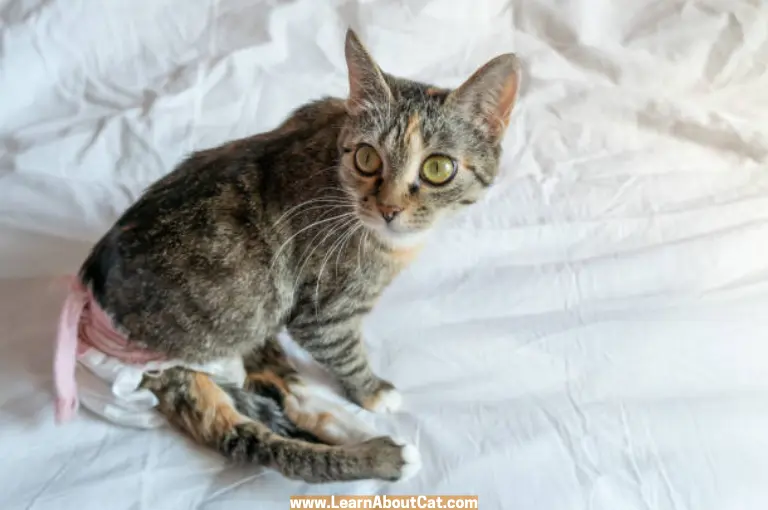
What Are Cat Diapers Exactly? Can Cat Wear Diapers?
Cat diapers are purpose-designed garments intended to prevent cats from soiling themselves or their surroundings. These diapers are crafted from soft and absorbent materials, and they come in both disposable and reusable alternatives.
Some cat diapers are designed to wrap around the cat’s belly, while others cover the lower half of the body entirely.
The Purpose of Diapers for Cats
Cat diapers serve multiple purposes in different situations. They are particularly useful for:
- Preventing accidents and messes: Cats, especially kittens or older cats, may have accidents outside the litter box due to behavioral issues, health conditions, or aging. Diapers can help contain the mess and minimize the need for extensive cleaning.
- Managing incontinence or health conditions: Cats suffering from urinary or fecal incontinence, mobility issues, or recovering from surgery may benefit from wearing diapers. Diapers provide a hygienic solution and keep the cat comfortable while managing these conditions.
- Protecting furniture and carpets: Some cats may develop a habit of marking or spraying, causing damage to furniture and carpets. Diapers can act as a barrier and help prevent such incidents, saving your belongings from potential harm.
Check Out: How to Make a DIY Cat Diaper? [Easy Guide]
Why Would You Want to Put a Diaper on a Cat?
As a cat owner, you might wonder why anyone would resort to using diapers for their feline friends. However, there are several valid reasons why cat diapers can be beneficial.
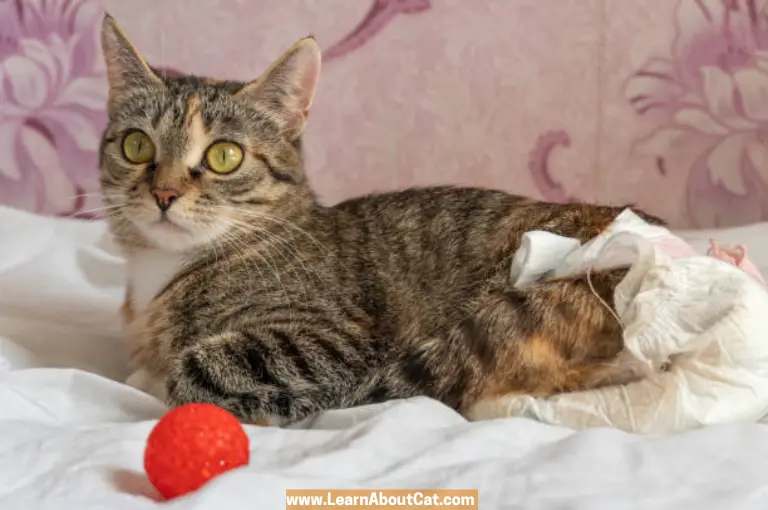
Medical Conditions
If your cat is dealing with a medical condition that leads to accidents or incontinence, cat diapers can offer a practical solution.
Senior cats, in particular, may experience incontinence or frequent urination due to ailments like diabetes, kidney disease, or feline cognitive dysfunction (FCD). Diapers can help maintain a clean living environment while allowing your cat to move around comfortably.
Traveling
When you’re traveling with your cat, concerns about accidents in carriers or unfamiliar environments may arise. In such cases, a diaper can be a useful aid in ensuring a worry-free journey.
Additionally, if you plan to stay in a pet-unfriendly accommodation, using a diaper can be a practical solution.
Post-Surgical Care
After a surgical procedure, your cat may require a diaper to protect the incision site and prevent infection.
Diapers also serve the purpose of deterring your cat from licking or biting at the incision, which could impede the healing process.
Behavioral Problems
If your cat is engaging in territorial marking or spraying, diapers can help prevent messes and safeguard your furniture and carpets.
However, it’s important to address the underlying behavioral issues and work collaboratively with your veterinarian to find a suitable resolution.
Find Out: Can I Use My Glucose Meter For My Cat?[Answered]
How Often To Change Cat Diaper?
The frequency of changing a cat’s diaper depends on several factors, including the size of the cat, the absorbency of the diaper, and the amount of activity the cat is getting. You should try to change the diaper every 2-3 hours. If it gets dirty before that time, you should change it even sooner. Here are some general guidelines to help you determine how often to change your cat’s diaper:
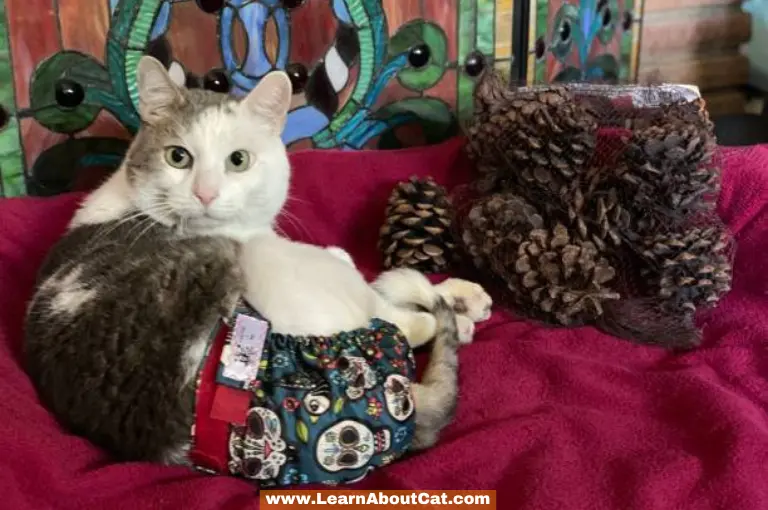
- Check Regularly: Check the diaper at least every 2 to 3 hours. This ensures that your cat stays clean and comfortable.
- Monitor Soiling: If the diaper is soiled with urine or feces, it should be changed immediately. Leaving a soiled diaper on your cat can lead to skin irritation and discomfort.
- Preventive Changes: Even if the diaper isn’t visibly soiled, consider changing it every 3 to 4 hours to prevent any potential issues and maintain hygiene.
- Skin Health: Keep a close eye on your cat’s skin condition. If you notice any signs of redness, irritation, or discomfort around the diaper area, consider changing the diaper more frequently or adjusting the fit.
- Vet’s Recommendations: Consult your veterinarian for personalized advice. If your cat has specific medical conditions that require diaper use, your vet can guide you on the optimal changing frequency.
Types of Diapers for Cats
When it comes to cat diapers, there are two main types to choose from:
Disposable Diapers
These are convenient and easy to use. They are designed for single use and come with adhesive tabs for secure fastening.
Disposable diapers are available in various sizes and absorbency levels, catering to different cat breeds and needs. They are a popular choice for temporary use or for cats with occasional incontinence.
Washable and Reusable Diapers
These diapers are made from durable, washable fabrics such as cotton or microfiber. They typically have adjustable Velcro or snap closures for a snug fit.
Washable diapers are more eco-friendly and cost-effective in the long run, especially for cats with chronic incontinence or specific health conditions. They require regular washing and maintenance to ensure cleanliness and hygiene.
Can I Use Baby Diapers on My Cat?
Yes, it is technically possible to use baby diapers on cats in certain situations. However, it is not recommended due to the fact that baby diapers are not specifically designed for cats. They may not fit properly, leading to discomfort, and may not provide sufficient absorbency for feline needs
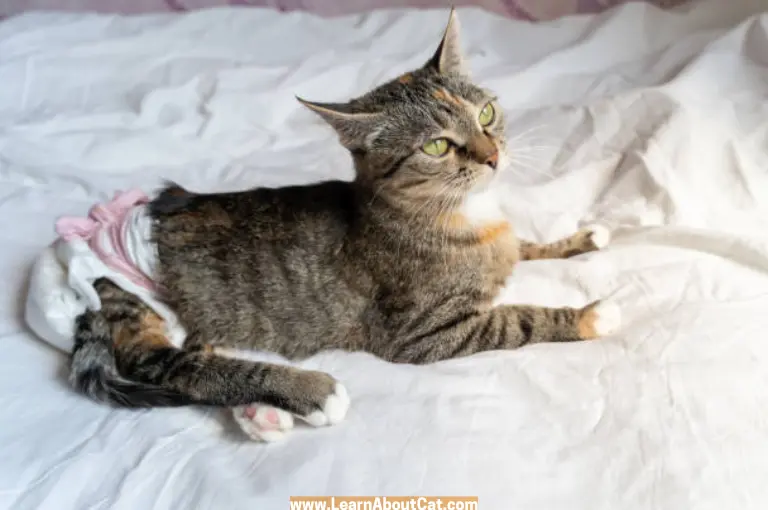
What Happens When You Use Baby Diapers on Cats
The use of baby diapers on cats is not recommended by veterinarians due to several potential issues that may arise. Let’s explore what can happen when baby diapers are used on cats:
- Poor Fit: Baby diapers are not designed to accommodate the unique shape and size of cats. As a result, they may not fit properly, causing discomfort and potentially leading to your cat attempting to remove the diaper, which could result in injury.
- Skin Irritation: Cats have sensitive skin, and the materials used in baby diapers may irritate their skin or trigger allergic reactions. This can lead to redness, itching, and discomfort for your cat.
- Urine Scald: Baby diapers are not designed to handle the amount of urine produced by cats. Prolonged exposure to urine can cause urine scald, a condition where the skin becomes irritated and damaged. Urine scald can be painful, and uncomfortable, and may even lead to infection.
- Behavioral Issues: Introducing a foreign object like a diaper can cause stress and anxiety in cats, who are creatures of habit. This can potentially result in behavioral issues, including litter box avoidance, aggression, and depression.
How to Choose the Right Diapers for Your Cat
Choosing the right diapers for your cat is essential to ensure their comfort and effective usage. Consider the following factors when selecting cat diapers:
Size and Fit
Diapers that are too loose or too tight may cause discomfort and leakage. Measure your cat’s waist size accurately and choose a diaper size accordingly. It’s important to check the manufacturer’s size guide and adjust it if necessary.
Absorbency Level
Different cats have different needs when it comes to absorbency. For cats with mild incontinence or occasional accidents, a low to medium-absorbency diaper may be sufficient.
Cats with more severe incontinence or health conditions may require diapers with higher absorbency.
Comfort and Freedom of Movement
Ensure that the chosen diapers allow your cat to move freely without restrictions. Look for diapers that have elastic leg holes and waistbands for a secure yet comfortable fit.
Cats should be able to walk, sit, and groom themselves comfortably while wearing the diaper.
Ease of Use and Maintenance
Consider how easy it is to put on and take off the diapers. Disposable diapers are generally more convenient in this regard, as they can be simply discarded after use.
Washable diapers require regular washing and drying, so ensure they are easy to clean and maintain.
Introducing Diapers to Your Cat: Step-by-Step Guide to Putting Diapers on Your Cat
Introducing diapers to your cat may require some patience and positive reinforcement. Follow these steps for a successful transition:
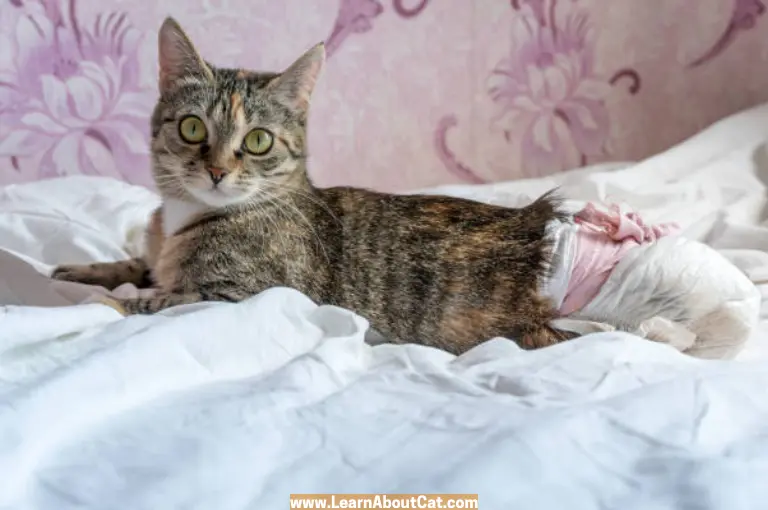
- Familiarizing Your Cat With the Diaper: Let your cat sniff and investigate the diaper before attempting to put it on. This helps them become accustomed to the new item and reduces any initial resistance.
- Choose a Quiet Area: Pick a peaceful location to avoid distractions.
- Place the Diaper Opened Up: Gently place the diaper on a flat surface, open side up.
- Position Your Cat: Hold your cat comfortably on your lap or beside you.
- Gradual Introduction and Positive Reinforcement: Start by putting the diaper on your cat for short periods.
- Slide the Diaper Under: Lift your cat’s tail and slide the diaper under, ensuring a snug fit.
- Secure the Diaper: Adjust the diaper’s tabs for a secure fit, allowing room for movement.
- Increase the Duration: gradually increase the duration as it becomes more comfortable.
- Reward and Encourage: Reward them with treats or praise during and after diaper-wearing sessions to create a positive association.
Proper Diaper Usage and Maintenance
To ensure your cat’s comfort and hygiene, it’s important to follow proper diaper usage and maintenance practices:
- Changing the diaper regularly: Regularly check the diaper for wetness or soiling. Change the diaper promptly to prevent discomfort and minimize the risk of skin irritation or infections. Disposable diapers should be replaced after each use, while washable diapers require more frequent changes.
- Cleaning and sanitizing the diaper area: When changing the diaper, clean your cat’s genital area gently with mild pet wipes or warm water and a soft cloth. This helps maintain cleanliness and prevents odors or infections. Avoid using harsh chemicals or scented products that may irritate your cat’s skin.
- Preventing discomfort or irritation: Check the diaper fit regularly to ensure it is not too tight or causing any discomfort. Avoid using diapers that are too small or restrictive. If you notice any signs of irritation, redness, or discomfort. If you notice any signs of irritation, redness, or discomfort, consult your veterinarian. They can provide guidance on adjusting the diaper fit or recommend alternative solutions if needed.
Potential Challenges and Solutions
While using diapers for cats can be beneficial, there may be some challenges along the way. Here are a few common challenges and their possible solutions:
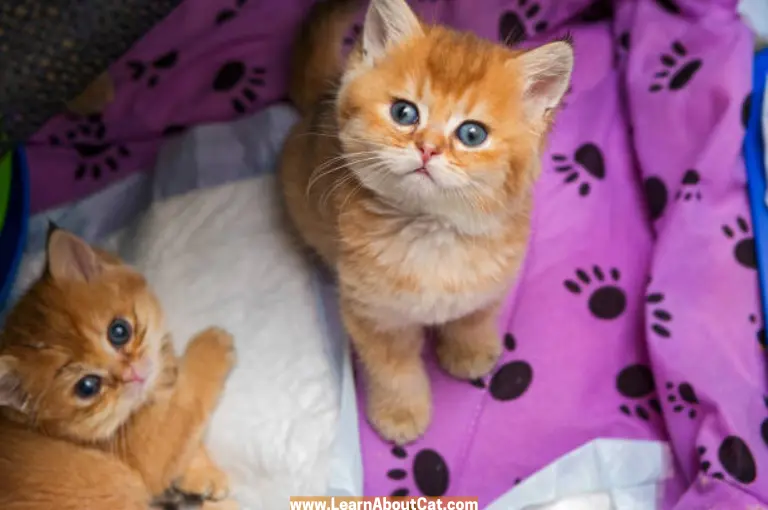
- Cat’s resistance or discomfort: Some cats may initially resist wearing diapers or feel uncomfortable with the new sensation. Be patient and allow them time to adjust. Use positive reinforcement, such as treats or favorite toys, to create a positive association with the diaper.
- Diaper leakage or fit issues: Improperly fitted diapers or low-absorbency options can lead to leaks. Ensure the diaper fits snugly but comfortably around your cat’s waist and thighs. Consider using diapers with higher absorbency or additional absorbent pads if leakage persists.
- Allergies or sensitivities: Cats with sensitive skin may develop allergies or irritations from certain diaper materials. If you notice any signs of discomfort, such as itching or redness, switch to diapers made from hypoallergenic materials or consult your veterinarian for alternative solutions.
Frequently Asked Questions
Can all cats wear diapers?
Not all cats require diapers. Diapers are most commonly used for cats with medical issues, incontinence, or behavioral problems. Whether a cat can wear diapers depends on their individual needs and circumstances. It’s a good idea to speak with your vet to figure out if diapers are right for your cat.
Can cats groom themselves while wearing diapers?
Cats can groom themselves to some extent while wearing diapers, but they may need assistance in cleaning their genital area. Regular checking and cleaning are necessary to maintain hygiene.
Can diapers be used during travel or outdoor activities?
Yes, diapers can be used during travel or outdoor activities to prevent accidents. Ensure the diaper fits securely and consider using more absorbent options for extended
Conclusion
In certain situations, such as managing incontinence, preventing accidents, or protecting furniture, using diapers for cats can be a practical and beneficial solution.
The good news is that it is indeed possible to use diapers for cats, and there are various options available to ensure both your needs and your cat’s comfort are met.
If you do decide to opt for a cat diaper, you will find a range of options available, including disposable and reusable variants. It is crucial to select a diaper that fits your cat snugly and ensures their comfort. Moreover, closely monitoring your cat while they wear the diaper is vital to ensure they do not experience any discomfort or irritation. With patience and proper care, you can train your cat to wear a diaper and lead a contented and healthy life.
Remember to monitor your cat’s behavior, consult your veterinarian when needed, and be patient throughout the process.
Who is Isabella?
My name is Isabella, and I am a dedicated and knowledgeable cat enthusiast. With years of experience caring for cats and a deep love for felines, I made a mission to help other cat lovers navigate the challenges of cat ownership.

